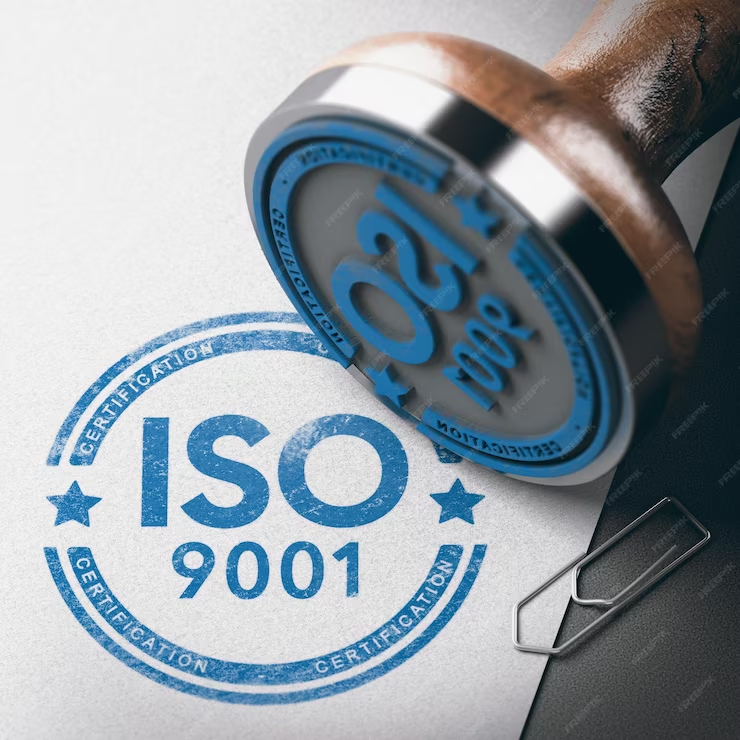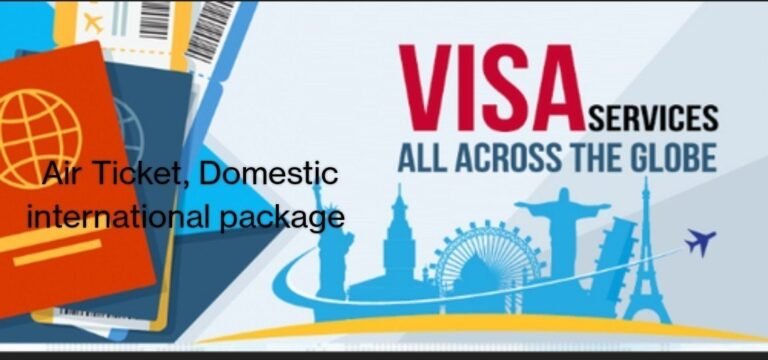Unlocking Excellence: The Journey to ISO 9001 Certification
I. Introduction
A. Explanation of ISO 9001 Certification:
ISO 9001 Certification, established by the International Organization for Standardization (ISO), is a globally recognized standard for quality management systems (QMS). It sets forth criteria for organizations to demonstrate their ability to consistently deliver products and services meeting customer and regulatory requirements. Essentially, ISO 9001 Certification serves as validation that a company adheres to stringent quality management practices and is committed to ongoing improvement.
B. Importance of ISO 9001 Certification for Businesses:
Obtaining ISO 9001 Certification holds significant importance for businesses across diverse industries due to several key reasons:
- Enhanced Credibility and Reputation: ISO 9001 Certification signifies to customers, partners, and stakeholders a commitment to quality and customer satisfaction. It enhances credibility, instilling trust and setting certified organizations apart from competitors.
- Improved Efficiency and Effectiveness: Implementing ISO 9001 standards necessitates the establishment of robust quality management systems, resulting in streamlined processes, reduced errors, and heightened efficiency. By prioritizing quality and optimize resource allocation.
- Increased Customer Satisfaction: ISO 9001 Certification places a strong emphasis on understanding and meeting customer requirements. By consistently delivering products and services that meet or exceed customer expectations, organizations enhance satisfaction and positive referrals.
II. Understanding ISO 9001
A. Overview of ISO 9001 Standards:
ISO 9001 stands as the preeminent international standard for quality management systems (QMS), applicable across industries and organizational sizes. Rooted in a set of principles, including customer focus, process approach, improvement and relationship management, ISO 9001 mandates requirements spanning quality policy, planning, resource management, product/service realization, and performance evaluation.
B. Key Principles and Requirements of ISO 9001:
- Customer Focus: Organizations must discern and fulfill customer needs while aspiring to surpass expectations.
- Leadership: Top management shoulders the responsibility of formulating quality policies, objectives, and fostering a culture of quality across the organization.
- Engagement of People: Employees at all echelons are encouraged to participate in quality management endeavors, fostering a culture of continual improvement.
- Process Approach: Quality management necessitates a systematic approach, entailing the identification, comprehension, and management of interlinked processes.
- Improvement: Organizations must continuously seek avenues for enhancement, both in products/services and QMS effectiveness.
- Evidence-Based Decision Making: Decisions should be underpinned by analysis of pertinent data and information, ensuring efficacy and efficiency.
- Relationship Management: Cultivating and nurturing mutually beneficial relationships with stakeholders, including suppliers and partners, is imperative for sustained prosperity.
III. Preparing for ISO 9001 Certification
A. Assessing Organizational Readiness
Critical aspects of assessing organizational readiness encompass:
- Gap Analysis: Executing a gap analysis entails juxtaposing prevailing quality management practices with the stipulations delineated in the ISO 9001 standard. This process illuminates areas of non-compliance or inadequacies necessitating rectification prior to pursuing certification.
- Leadership Commitment: Evaluating the extent of commitment from top management is imperative for the successful attainment of ISO 9001 certification.
- Resource Allocation: Organizations need to scrutinize the resources indispensable for procuring ISO 9001 certification and financial investments. Ensuring adequate resource allocation facilitates the establishment of requisite infrastructure and support systems to expedite the certification process.
B. Establishing Quality Management Systems
Vital steps in establishing quality management systems encompass:
- Process Mapping: Identifying and delineating key processes within the organization is pivotal for comprehending how activities contribute to product or service delivery. Process mapping streamlines workflows, eradicates redundancies, and unveils avenues for enhancement.
- Documenting Procedures: Documenting procedures and work instructions is imperative to standardize processes and ensure universal comprehension among stakeholders. This encompasses formulating quality manuals, process flowcharts, and operating procedures delineating roles, responsibilities, and expectations.
- Implementing Controls: Enacting controls involves instituting measures to scrutinize, gauge, and administer quality across the organization. This may entail installing inspection checkpoints, instituting quality metrics, and executing corrective and preventive actions to rectify non-conformities.
IV. The Certification Process
A. Choosing a Certification Body
The inaugural step in the certification process is selecting a reputable certification body accredited by an internationally recognized accreditation body. Organizations should consider factors such as the certification body’s expertise, reputation, geographical coverage, and cost when making their selection. It’s imperative to opt for a certification body with experience in certifying organizations within the pertinent industry, comprehending the specific requisites of ISO 9001.
B. Preliminary Audit Assessment
Before proceeding with the formal certification audit, organizations may opt to conduct a preliminary audit assessment to gauge their readiness for certification. This assessment entails scrutinizing the organization’s QMS documentation, processes, and practices vis-à-vis the requirements of ISO 9001. The preliminary audit assessment aids in pinpointing any gaps or non-conformities necessitating rectification before the formal audit.
V. Challenges and Solutions
A. Common Challenges in Obtaining ISO 9001 Certification
- Limited Understanding: One prevalent challenge is a lack of comprehension of the ISO 9001 standard and its stipulations. Many organizations find it challenging to interpret the standard’s language and implement it effectively within their operations.
- Resource Constraints: Constraints in financial, human, and time resources can pose significant hurdles to the certification process. Organizations may struggle to allocate adequate resources to develop and implement a robust quality management system.
- Resistance to Change: Resistance to change within the organization can hinder efforts to adopt new processes and procedures necessary for ISO 9001 certification. Employees may exhibit reluctance to embrace new methodologies or perceive the certification process as cumbersome.
B. Strategies for Overcoming Obstacles
- Education and Training: Invest in educational and training initiatives to ensure that employees at all levels grasp the requirements of ISO 9001 and their roles in attaining certification. Offer comprehensive training on quality management principles, processes, and documentation criteria.
- Resource Allocation: Prioritize resource allocation to bolster the certification process. Allocate sufficient funding, personnel, and time to develop and implement the quality management system. Consider outsourcing certain tasks or engaging consultants proficient in ISO 9001 implementation.
- Change Management: Employ effective change management strategies to address resistance within the organization. Involve employees in the certification process, elucidate the benefits of ISO 9001 certification, and engage them in decision-making and problem-solving endeavors.
VI. Sustaining ISO 9001 Certification
A. Monitoring and Evaluation of Performance
Monitoring and assessing performance are crucial for maintaining ISO 9001 certification. Organizations need to establish processes to track key performance indicators (KPIs) related to quality objectives, customer satisfaction, process efficiency, and product conformity. Regular performance reviews allow organizations to spot trends, measure progress towards goals, and take corrective actions when needed.
B. Regular Internal Audits
Regular internal audits are foundational for maintaining ISO 9001 certification. Internal audits involve systematically reviewing processes, procedures, and quality management systems to ensure adherence to ISO 9001 standards and organizational requirements. Internal auditors evaluate the effectiveness of quality controls, pinpoint areas for improvement, and verify the implementation of corrective actions to address non-conformities.
VII. Conclusion
A. Encouragement for Businesses to Embark on the Certification Journey
For businesses contemplating ISO 9001 certification, now is the perfect moment to embark on this transformative voyage. ISO 9001 certification offers a plethora of benefits, including streamlined processes, heightened customer satisfaction, and bolstered market credibility. By committing to ISO 9001 certification, businesses signify their dedication to excellence and position themselves for sustained success and resilience.
B. Final Thoughts and Call to Action
In conclusion, I implore businesses to embrace the challenge of ISO 9001 certification and unleash the full potential of their quality management systems. By investing in ISO 9001 certification, organizations can elevate their performance, fortify their competitive stance, and foster business expansion. Let us seize this moment to champion excellence, spark innovation, and deliver unparalleled value to our customers.







